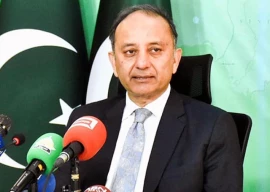
According to the Debt Policy statement prepared by the Ministry of Finance, the reduction in external debt in the last fiscal year 2011-12 was mainly because of repayments of International Monetary Fund (IMF) loans, appreciation of different currencies against the US dollar and absence of budgetary support from multilateral institutions. In 2010-11, the outstanding external debt and liabilities stood at $66.4 billion.
Pakistan repaid $1.2 billion to the IMF and gained $1.7 billion on the back of weakening of the US dollar against some currencies, but not the rupee. However, much of the gains were lost following a 10% decline in the rupee against the greenback.
Money owed to multilateral lenders came down to $25.4 billion in 2011-12, a drop of $431 million over the previous year.
These lenders – the World Bank and the Asian Development Bank – have stopped providing budgetary cushion, which used to be in the range of $3-4 billion a year, after the government delayed much-needed reforms. According to the report, even project financing shrank in the last fiscal year, which now hinges on the country’s ability to take on projects in an efficient manner.

With fears of default on international payments looming, the government is negotiating a fresh loan programme with the IMF, which has already cautioned that foreign currency reserves held by the State Bank of Pakistan were “below adequate levels”. In 2011-12, the State Bank’s reserves fell by $4 billion.
Though the drop in external debt is encouraging, concerns have been expressed about meeting outstanding debt obligations in absence of external inflows. The government bridges the gap between outflows and inflows from its foreign currency reserves, held by the central bank.
Against total commitments of $4.6 billion, actual loan disbursements in the last fiscal year were $3.1 billion, 34% less than the commitments.
Contrary to that, the country paid $4.5 billion on account of loan principal and markup during the period under review, indicating $1.4 billion more was paid compared to what was received from international creditors.
The report also highlights adverse implications of an increase in interest rates and depreciation of the rupee. “Any increase in interest rates and exchange rate depreciation will increase the debt servicing cost of the country and will affect the sovereign debt portfolio,” it warns.
The report underlines the need for a sophisticated currency hedging framework to stave off the adverse impact of movements in 20 currencies in which Pakistan holds its foreign debt.
Commenting on the $1.7 billion gains due to currency movements, the report says the savings would have been much higher, had the State Bank adopted a currency hedging framework.
It says over a period of 20 years, despite massive depreciation of the rupee, the cost of foreign currency borrowing was 1.5% lower compared to average domestic interest rates.
The report stresses the importance of comparing debt with foreign exchange earnings. “External debt liabilities have gone up to 4.3 times of total foreign exchange earnings… and generally acceptable threshold requires that foreign debt should not be more than two times of the country’s total foreign earnings.”
External debt and liabilities expressed as a percentage of GDP might be a common means of measuring the indebtedness of an economy, but repayment capacity is more accurately judged through showing debt as a percentage of the economy’s foreign exchange earnings and reserves, it adds.
Published in The Express Tribune, February 7th, 2013.
Like Business on Facebook to stay informed and join in the conversation.

















COMMENTS
Comments are moderated and generally will be posted if they are on-topic and not abusive.
For more information, please see our Comments FAQ